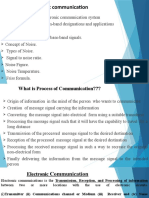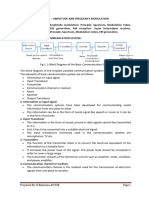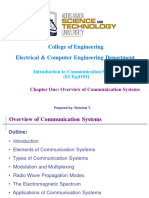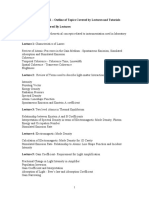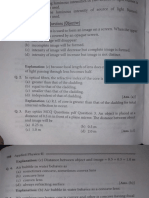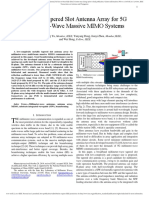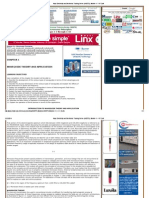0% found this document useful (0 votes)
41 views54 pagesModule 5
Module 5 covers communication schemes, detailing the process of electrical communication and the components of a basic communication system, including information sources, transducers, transmitters, channels, receivers, and output transducers. It explains the types of communication systems, modulation techniques, and noise effects, as well as the principles of mobile phone operation and cellular systems. The module also discusses various transmission mediums, including hardwired and softwired channels, and the importance of multiplexing in maximizing bandwidth utilization.
Uploaded by
dchristo2005Copyright
© © All Rights Reserved
We take content rights seriously. If you suspect this is your content, claim it here.
Available Formats
Download as PDF, TXT or read online on Scribd
0% found this document useful (0 votes)
41 views54 pagesModule 5
Module 5 covers communication schemes, detailing the process of electrical communication and the components of a basic communication system, including information sources, transducers, transmitters, channels, receivers, and output transducers. It explains the types of communication systems, modulation techniques, and noise effects, as well as the principles of mobile phone operation and cellular systems. The module also discusses various transmission mediums, including hardwired and softwired channels, and the importance of multiplexing in maximizing bandwidth utilization.
Uploaded by
dchristo2005Copyright
© © All Rights Reserved
We take content rights seriously. If you suspect this is your content, claim it here.
Available Formats
Download as PDF, TXT or read online on Scribd
/ 54










